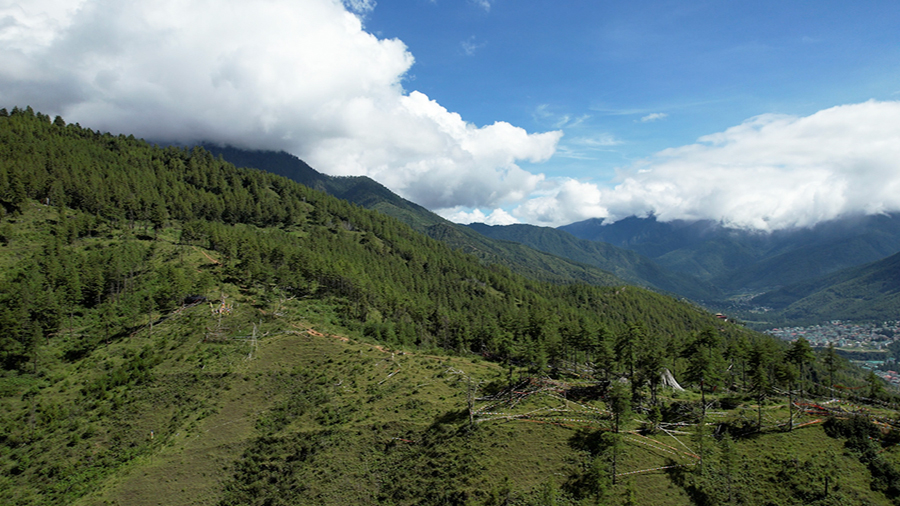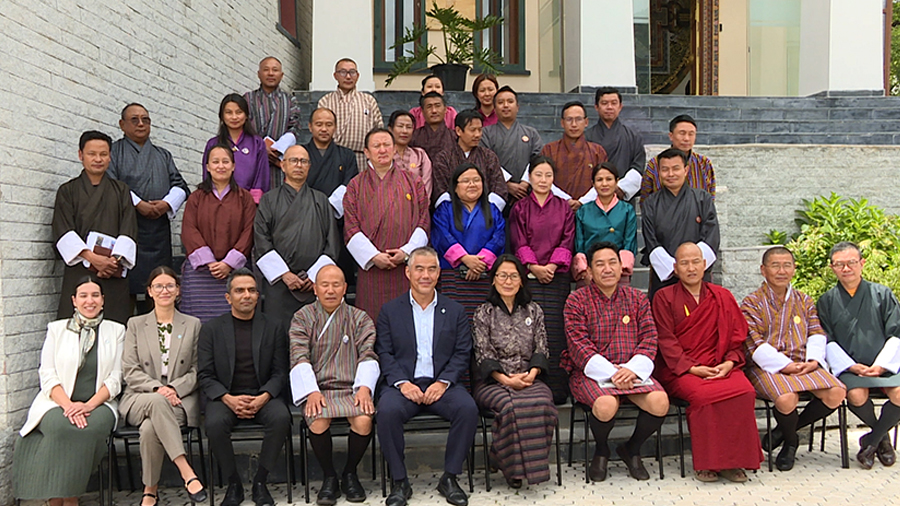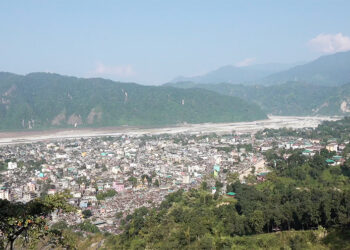 Bhutan aims to restore up to 50,000 hectares, equivalent to over 70,000 football pitches of degraded land, over the next ten years. To support this, the country aims to secure around USD 50 million to be allocated to national priorities, including building resilience to climate change, protecting biodiversity, and promoting sustainable development. To make this happen, the government has joined hands with Conservation International, an international non-profit organisation, Bhutan Ecological Society and Bhutan Trust Fund for Environmental Conservation.
Bhutan aims to restore up to 50,000 hectares, equivalent to over 70,000 football pitches of degraded land, over the next ten years. To support this, the country aims to secure around USD 50 million to be allocated to national priorities, including building resilience to climate change, protecting biodiversity, and promoting sustainable development. To make this happen, the government has joined hands with Conservation International, an international non-profit organisation, Bhutan Ecological Society and Bhutan Trust Fund for Environmental Conservation.
The four-party agreement represents a significant milestone in Bhutan’s ongoing efforts to conserve its forests and natural landscapes. The agreement is part of the Mountains to Mangroves initiative, launched last year, which aims to plant over ten million trees by 2030.
 As part of the plan, a one-day workshop was held to design a new funding approach that combines public, private, and philanthropic aid to support the restoration plans.
As part of the plan, a one-day workshop was held to design a new funding approach that combines public, private, and philanthropic aid to support the restoration plans.
This effort will help secure long-term investments in biodiversity, climate resilience, and community livelihoods. It will also ensure Bhutan’s Constitutional requirement to keep at least 60 per cent forest cover is not only maintained but made even better.
“The constitution mandating the conservation of forests is an amazing thing. It’s unprecedented around the world. That influences Conservation International to try to help make that real,” said Richard M Jeo (PhD), Chief Field Officer, Conservation International Asia-Pacific.
Meanwhile, officials said it has been difficult to secure funds for conservation efforts. However, with a concrete new financing plan, the problem is expected to be resolved soon.
A study by Conservation International found that nearly 800 hectares of land in Bhutan have been restored by planting trees. The goal is to restore a total of 50,000 hectares.
“Most forested areas are currently degraded. With this partnership, we aim to restore those areas into a forest by planting around 10 million tree saplings,” said Leki Tshewang, Programme Officer, Bhutan Trust Fund for Environmental Conservation.
“We have a lot of timber, but we need that timber for the welfare of the people. So, while sustainable harvesting is ongoing, this project is going to restore as many trees as possible, nurture them and ensure that they grow into a good forest from which the biodiversity can benefit, the people can benefit and of course, our country,” said Karma Tshering (PhD), Managing Director, Bhutan Trust Fund for Environmental Conservation.
Along with funding and scientific support, Conservation International will also provide advisory support and help align the project with the country’s goals.
“With any opportunity that we can help the people of Bhutan with that mission, we were really excited about that. Learning about initiatives, not just in the national parks or in the protected areas, but in the areas outside in efforts to restore those areas to not just plant trees but to bring back ecosystems and recreate livelihoods around things like agroforestry that can create jobs for the people of Bhutan is very inspiring for us,” said Richard M Jeo (PhD), Chief Field Officer, Conservation International Asia-Pacific.
A comprehensive funding and national restoration roadmap will be announced later this year. After that, an agreement will be signed, and planning for Bhutan’s long-term conservation and restoration work will begin.
Kelzang Chhophyel
Edited by Sonam Pem









